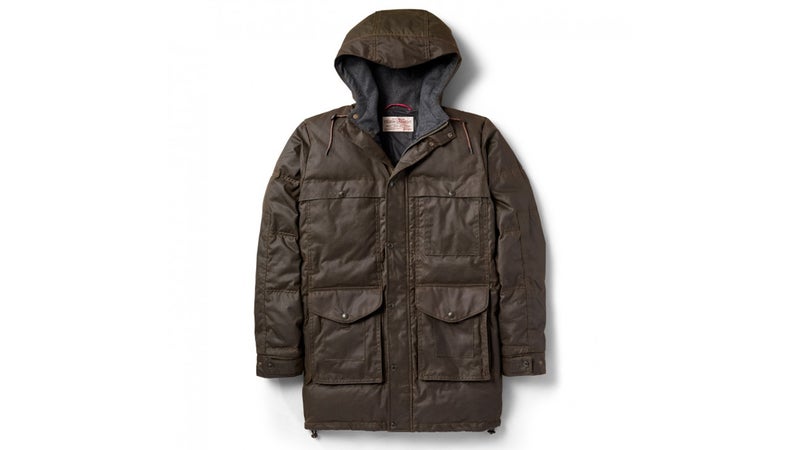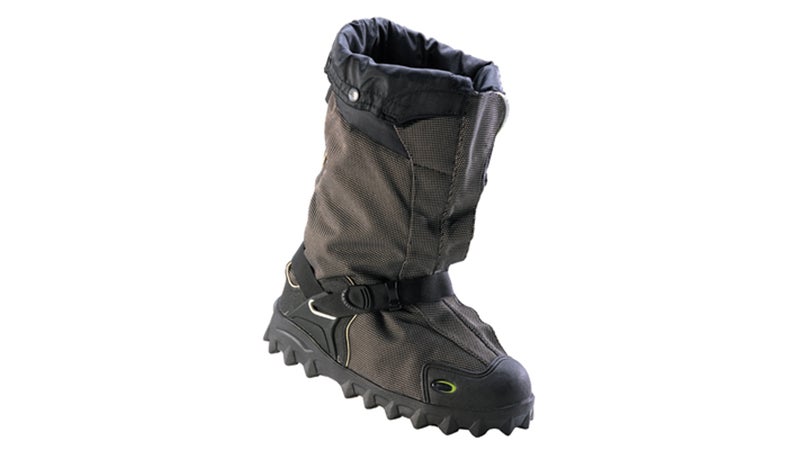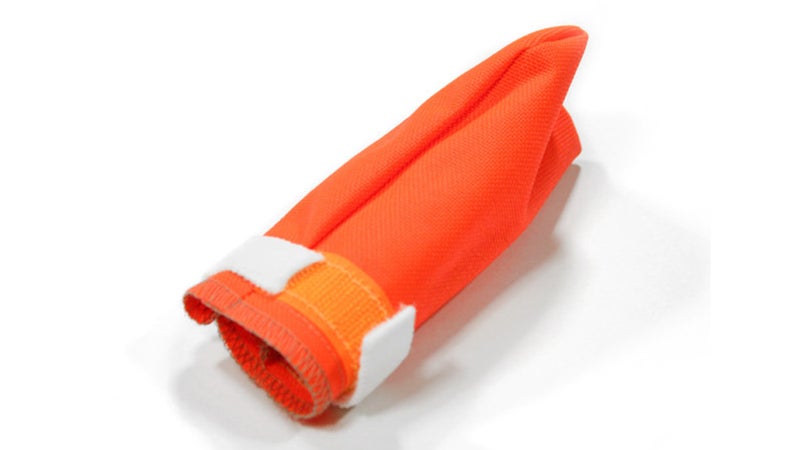Last Tuesday, Dallas Seavey won the 1,000-mile Iditarod sled dog race in a record 8 days, 11 hours, 20 minutes, and 16 seconds. It was the 44th running of the race, which remains one of America’s most original and greatest endurance events. Thanks to winds that sometimes reached 50 miles per hour, temperatures that dropped as low as negative-50 degrees Fahrenheit, and rough trail conditions, a full fourth of the 70 to 80 entrants don’t finish. Of the 16 dogs each musher starts with, only six are required to be in harness when they cross the finish line because so many succumb to exhaustion or injury.
As you can guess, proper gear is essential if you even want to attempt the race. I went to this year’s event to find out what mushers use to survive. Here’s a description of their most important kit.
The Top

Just like winter recreationists, mushers layer up top with a moisture-wicking shirt under a warm fleece or wool midlayer. But instead of a down puffy or Gore-Tex shell, they often go for a mushing-specific down jacket with waxed-canvas face fabric and a fur ruff around the hood.
The ruff is key because the long hairs around the collar catch flying snow and protect the musher’s eyes. Fur inside the hood adds warmth. There’s also a thick wire rim along the border of the hood that allows the ruff to be precisely positioned in front of the musher’s face.“A good ruff is better than any modern technology,” says Elliot Anderson, a 24-year-old musher who was running his second Iditarod. “You can have a nice pair of goggles, but a good ruff is better in a blizzard.”
The competitors opt for waxed canvas because it’s much more durable than the nylon of a standard puffy. Elliot, who is sponsored by Filson, wears a modified version of the brand’s , which has a four-ounce wax-treated cotton outer that has stood up to miles of abuse. Its other important features include 850-fill down, Velcro pockets that are easily accessible with gloves, and special pockets for storing food so it doesn’t freeze.
The Bottom

On their legs, mushers typically wear long underwear made from merino wool (known for its high warmth-to-weight ratio) and and them something like the or the with Gore-Tex Pro Fabric as an outer layer. On their feet, they’ll combine tall felt with insulated . Mushers are constantly stomping on the sled brakes, so they sometimes add extra socks to prevent bruising.
On their hands, mushers wear oversized mittens, like , along with . They also bring a supply of hand-warmers because even the best gloves will get cold when you’re whipping along for 12 hours at a time.
The Accessories

Of course, there’s a lot of other gear on the sled. The rest of the kit usually includes an ax, knife, snowshoes, water, first-aid kit, fuel, metal burner, multiple headlamps, extra clothing, and food—anything from nuts to oatmeal to pizza, all wrapped in tinfoil. In addition to a normal first-aid kit, Billy Snodgrass, a 59-year-old kennel owner from Wyoming, says he carries superglue to seal any cuts and zinc oxide cream to treat skin irritations like rashes or sunburns.
There isn’t enough time to set up and break down a tent every time the mushers stop to rest, so they lay negative-25-degree bags on a pile of hay. (Bales are available at checkpoints along the way.)
The dogs also get hay for beds, frozen meat and kibble (which the dogs eat twice a day, mixed with water), and lots of Cordura booties to protect paws from ice and rocks. “I’ll go through about 1,500 dog booties in the race,” Snodgrass says. If they need to carry an exhausted or injured dog, mushers will sometimes pull a small dog crate on runners. If they don’t bring a crate, the tired dog rides on the sled.
Beyond the gear they need to stay safe and warm, the athletes also carry an iPod or some kind of digital music device. “I have a lot of disco on my iPod for when I get tired,” says Snodgrass, who will belt out songs to fight off sleep deprivation and push through the roughest stretches of trail. “The dogs like it,” he explains.
The Hacks and the Sleds
Veteran racers have gotten creative on the trail. Jeff King built —a thin vertical design that he can drop a metal growler into and quickly boil water. Lance Mackey, who won the Iditarod four times in a row, from 2007 to 2010, has a spillproof burner about the size of a construction worker’s tool bucket bolted to the back of his sled so he can boil water while on the move.
While some mushers still race on a wooden sled, most have switched over to aluminum or carbon fiber. Hockey stick blanks, sometimes coated in fiberglass or carbon fiber layers to increase durability, are commonly used for the stanchions.
Mushers can’t carry everything they need for the entire race on one sled—especially when it comes to food for them and the dogs—so they send supplies ahead and restock at the 21 official checkpoints between the Iditarod start in Willow, Alaska, and the finish line in Nome. “You have to take so much stuff, it just gets stupid,” Snodgrass says. They’ll even send whole new sleds that they swap out. Trail conditions are usually worse in the first half of the race, requiring a sturdier sled to ram through sections without much snow. Conditions improve in the second half—though the weather grows more brutal—allowing mushers to use a more agile and lighter sled for the final push.


